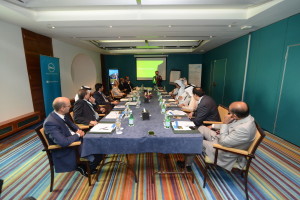 As is the case in life, with good technology, it can be hard to let go. Microsoft’s successful Windows Server 2003 will no longer be supported in six months’ time, and unless customers are willing to fork out for ‘Custom Support’ – an extension of the support deadline from Microsoft – then their systems will be left unsupported, and potentially vulnerable. With a vast number of applications still running on Windows Server 2003 today, the software ecosystem that runs on the server is likely to be dated and in need of an overhaul.
As is the case in life, with good technology, it can be hard to let go. Microsoft’s successful Windows Server 2003 will no longer be supported in six months’ time, and unless customers are willing to fork out for ‘Custom Support’ – an extension of the support deadline from Microsoft – then their systems will be left unsupported, and potentially vulnerable. With a vast number of applications still running on Windows Server 2003 today, the software ecosystem that runs on the server is likely to be dated and in need of an overhaul.
Servers remain critical to a business because of the applications that run on them, which may have to be rewritten or replaced. This could be because the company that built them may be out of business or the in-house development team may have been disbanded.
With a number of organisations in the Middle East facing a lack of resources and migration knowledge, as well as having a significant amount of legacy apps and software, there are a number of concerns among CIOs about the process and end result of a switch.
Shams Hasan, Enterprise Product Manager, Dell Middle East, framed the issue of migration as one that had to be resolved, “Doing nothing is not an option,” he said. “You need to consider your workloads and make the decision accordingly.” He then homed in on the main errors that can result from a poorly managed migration, “Mistakes made during a migration include insufficient planning and assessment, underestimating the user and organisational impact, inadequate data protection and failure to optimise the new environment,” he said.
Ahmad Al Mulla, Senior Vice President, IT, Emirates Global Aluminium, said that although his team has made strong progress in a full migration, he still harbours a number of concerns around applications. “There is a big challenge in terms of upgrades,” he said. “Applications are not always supporting new versions. We have few on Windows Server 2003 but we are mostly on Windows Server 2008. Migration is not an easy option sometimes, you might be able to migrate but then you might have problems on the application sides. If you don’t move, there are lot of challenges as well such as security; response time is very important.”
The roundtable drew a mix of IT leaders – some who had already completed the migration, and others who were looking to do so in the coming months. Abdulrahman Alonaizan, Arab National Bank, underlined the importance of optimising internal resources in smoothing his team’s path to a successful migration. “A key resource is in-house expertise,” he said. “We still needed vendors’ input, but we wanted to minimise our reliance on them. We wanted to enable our local, in-house talent to be able to do most of the work. That way we were not waiting for help. It’s important to be organised as well as IT-savvy.”
Abdulsalam Rahma Al Bastaki, Senior Executive Director, Information Management, Dubai Properties Group, echoed the Al Mulla’s sentiments on the underlying difficulty of modernising applications, “We started with Windows Server 2003 and moved to the 2012 edition,” he said. “We faced a number of challenges from an applications point of view; in many cases old applications do not exist, we had to find new versions.”
Aside from the fear of failure, the migration from Windows Server 2003 can also provide organisations with a vital opportunity to evaluate and revamp existing IT infrastructure. Mubarik Hussain, Head of IT, Petroserv Limited, did exactly that. “Our environment was not a great design,” he said. “I used this opportunity to virtualise everything. We put in best practices such as security policies, consolidation of data, also the future of the company. The new MD had decided on some business transformation changes which I am now leading. I can do many things on the new system and which would not have been possible on the legacy technology; failure to migrate doesn’t just bring security issues but also those of stability. If your business environment is not stable then it will be looked at negatively in case you have downtime. For scalability, migration is also important.”
Hasan rounded off things by underlining the need for a collaborative approach in managing a migration, “The Middle East has evolved; requirements here are so much more bespoke,” he said. “There needs to be a co-creation. Internal input is great but external input is also needed. Collaboration is often what solves challenges from a bespoke point of view.”





